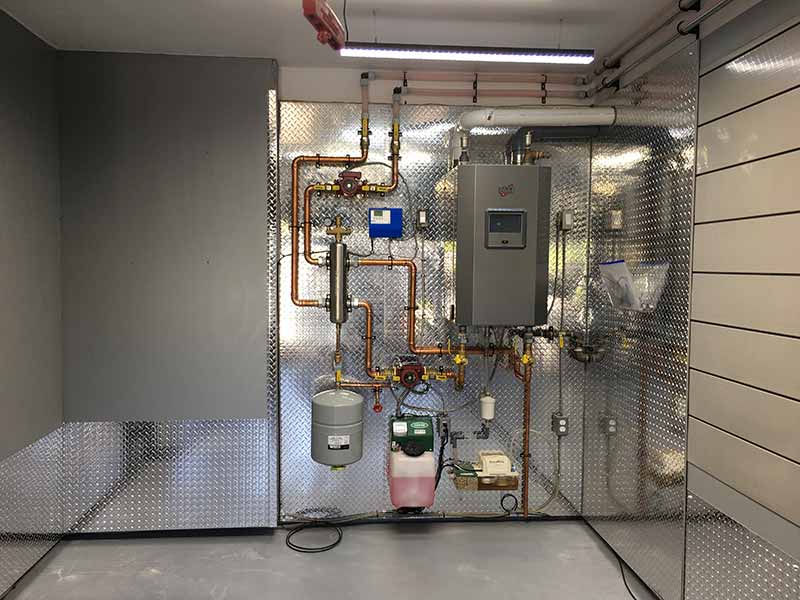Snow melt systems – knowing what to expect
There are 2 types of snow melt applications. It is important to understand the difference between both systems before making the decision to invest in yours.
Commercial/Critical applications
We install critical systems in Hospitals, rooftop Heli-pads and shopping mall melting pads. They have many non- standard and fail safe components such as backup power generators, multiple boilers to share the load and meet extreme demands of a snow melt. Very tight loops ensure maximum heat transfer. They will produce a 99% melting guarantee as the snow and ice start to fall in any storm condition.
Convenience applications
Standard convenience systems are typically residential and light commercial applications where there is no imminent rush to melt the snow as soon as it starts to hit the ground. It may take some time to completely melt your driveway. These are the more cost effective and ‘efficient’ solutions.
There are settings to adjust for personal preferences. Keep in mind, the faster you want the snow to melt, it impacts maintenance, wear and tear and your gas bill. Most home owners choose to have their snow melt sensor activate upon detecting moisture on the “puck sensor”. This will initiate a cold start.

The surface of the slab has to heat up to at least 0.5 degrees Celsius in order to melt the snow. It may take several hours to bring the slab to this melting temperature. If the snow accumulation is extreme, expect to see some snow on your driveway when you get home from work. Conditional on the temperature and speed of the snow fall, your system may catch up during the storm or may take a day to completely rid your driveway of snow and ice.
In extreme weather conditions snow melt systems are programmed to shut down. They simply cannot compete with Mother Nature. The heat loss on the surface of your driveway will simply negate the performance of your system. You will be wasting gas only to lose the heat before it reaches the slab. This is experienced with -25 degree temps or cooler and snowy conditions and high winds.
If you want a faster melt on your driveway, the system can be setup to idle/pre-heat or anticipate a ‘storm.’ Idling will maintain a set temperature on your driveway (typically -6 to -2 Celcius) which gives the snow melt system a running start when the puck detects snow.
Hence your performance dramatically improves and response time decreases. This helps keep up with most weather conditions.
The ‘Storm’ feature manually tricks your system to assume it is currently snowing and will run the system to bring the slab to an above 0 temp which melts the snow on contact with the slab.
Understanding this concept will ensure you make the right decision when selecting the system that is right for your home.



